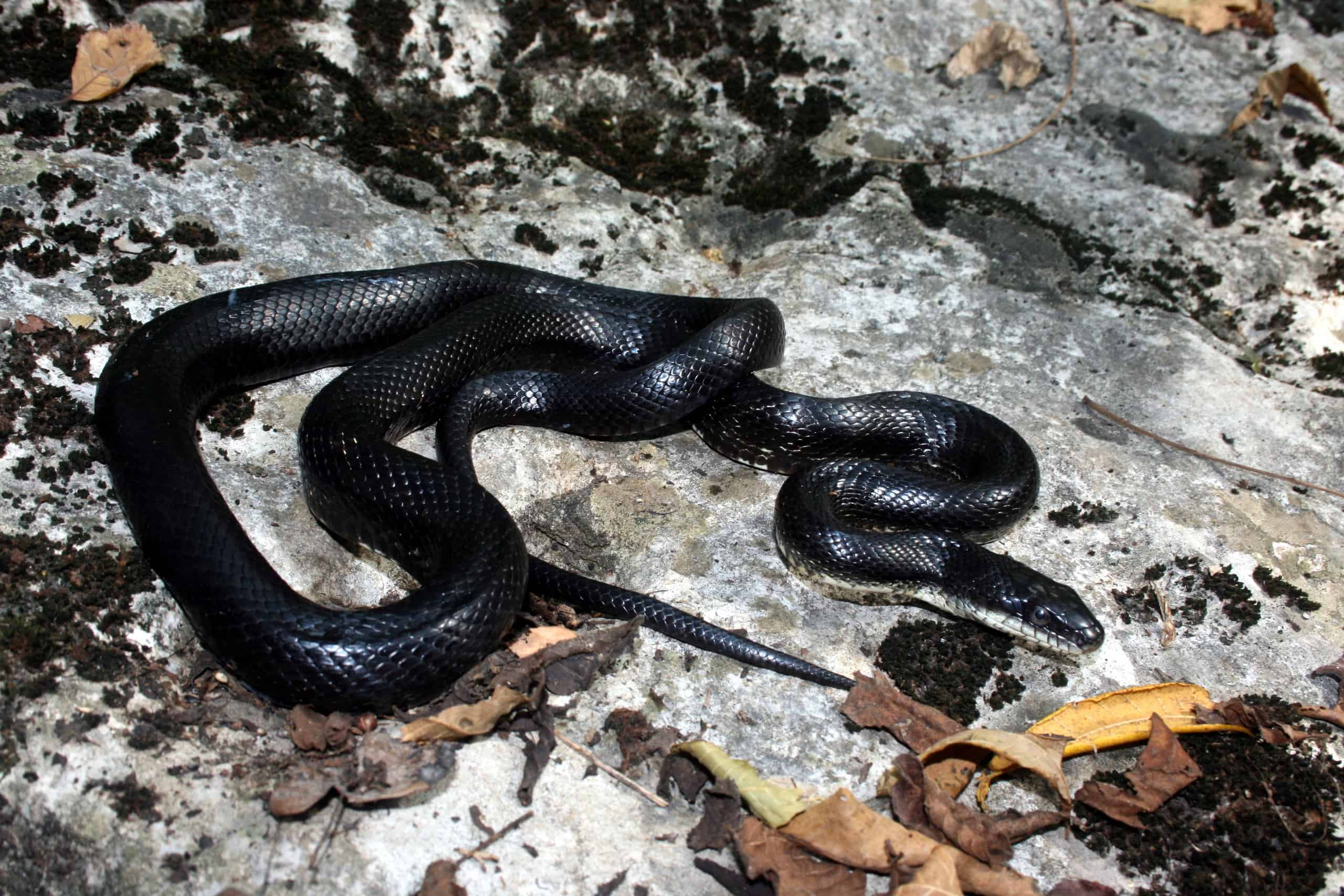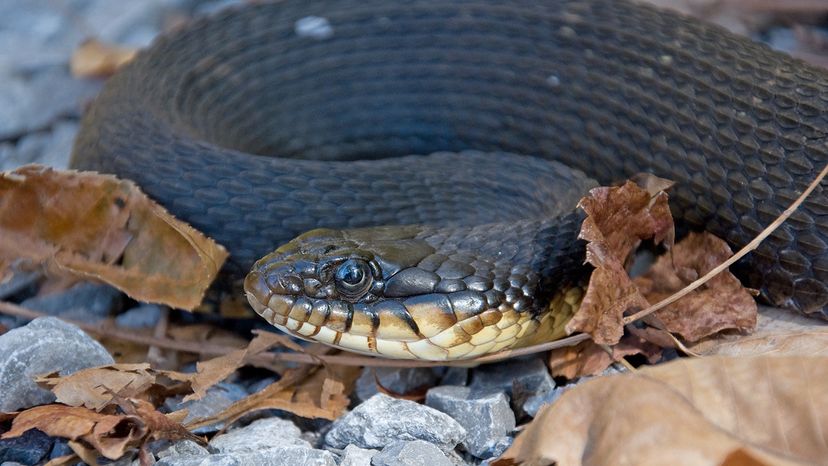The southeastern United States is home to a great diversity of snakes. There are about 50 species of snakes (only seven of which are venomous) that may be found along the Atlantic and Gulf coastal states from Louisiana to North Carolina. These snakes live in a variety of upland and wetland habitats and play important roles in the regions ecology. They are both predators and prey and thus form important links in natural food webs.
Regrettably, populations of many species of snakes are declining not only throughout the southeastern United States but also worldwide. These declines are largely due to habitat loss and degradation, high mortality on roads, and pollution associated with development, agriculture and other human activities. In addition, introduction of invasive species, disease, parasitism, and even climate change may exert negative effects on snake populations. Many species of snakes must also withstand pressures caused by unsustainable collection for the pet trade as well as persecution by humans as a result of misinformation or lack of knowledge regarding snakes.
The purpose of this publication is to provide information on the ecology and identification of black-colored snakes so that the reader is better able to differentiate among them. Seven species are highlighted, culminating with the southern black racer, the quintessential “black snake” of the Southeast. The intended audience for this publication is broad and includes amateur naturalists, especially snake enthusiasts, as well as anyone interested in identifying dark-colored (i.e., black) snakes in the southeastern United States.
Black snakes have long fascinated humans with their dark, sleek appearance and mysterious nature. These serpents come in a diverse array of species, each with its own unique traits and behaviors. In this article, we’ll shed some light on these captivating reptiles and explore what makes them such a distinctive group.
What Defines a Black Snake?
The term “black snake” refers to any snake that has black or very dark-colored scales, This includes snakes that are entirely black as well as those with partly black scales Some of the most common black snake species include
- Rat snakes
- Racers
- Kingsnakes
- Pine snakes
- Water snakes
- Cobras
Black snakes span several taxonomic families, so they encompass a wide range of characteristics beyond just coloration. Some are venomous while others are not. They inhabit diverse environments around the world, from forests to deserts to wetlands. Their sizes range from just a foot or two long to over eight feet in length.
Despite this diversity, their uniformly dark scales provide excellent camouflage, allowing them to blend into shadows and dark crevices with ease. This aids their hunting and defensive abilities in the wild.
Where Are Black Snakes Found?
Black snakes have a nearly worldwide distribution across six continents. Different species thrive in particular regions and habitats
-
The Americas host black rat snakes, racers, kingsnakes, and pine snakes, among others. These range from the southern U.S. into Central and South America.
-
Africa is home to black spitting cobras and black mambas, two venomous black snake species.
-
Australia has the black-headed python, known for its distinctive black head and brown body.
-
Parts of southern Europe and the Middle East host the large black whip snake.
Though black snakes live in many types of terrain, they tend to favor areas with plenty of hiding spots, like forests and swamps. Their dark coloration provides excellent camouflage in the shadows.
Behavior and Diet
Most black snake species are non-venomous constrictors that feed on small mammals, birds, eggs, amphibians, fish, and other snakes. However, some are venomous, like cobras and mambas.
Black snakes exhibit an array of behaviors:
-
Many are fast-moving and prefer to flee from threats. Racers get their name from their speed.
-
Some are adept climbers, like rat snakes, which often climb trees and rafters when hunting.
-
Aquatic black snakes, like water snakes, spend much of their time swimming and foraging in the water.
-
Secretive snakes, like black swamp snakes, hide in vegetation and are mostly active at night.
-
Defensive behaviors include tail vibrating, musking, inflating the body, and biting when threatened.
Despite menacing appearances, most black snakes are not aggressive toward humans and prefer to avoid confrontation if possible. Maintaining a respectful distance allows you to observe these intriguing reptiles in their natural habitats.
Conservation Status
Though many black snake species remain widespread and abundant, some are threatened by habitat loss and human persecution:
-
The eastern indigo is protected in parts of its southeastern U.S. range due to diminishing habitat.
-
The northern black racer has disappeared from some areas, like West Virginia.
-
The black pine snake is considered threatened or endangered in parts of the southeastern U.S.
Education about black snakes’ importance in controlling rodents, venomous snakes, and other pests can help promote conservation. Protecting natural habitats and wetlands also supports healthy black snake populations.
In Summary
Black snakes comprise a diverse array of non-venomous and venomous species around the world. They inhabit many types of environments and exhibit fascinating behaviors and adaptations. Though some are in decline, most remain common, helping control pest species. Their sleek dark scales will likely continue to intrigue humanity for years to come. Approach with respect, and you may be rewarded with a glimpse into the mysterious world of these captivating reptiles.

Black-Colored Snakes in the Southeast
Individuals of some snake species look quite similar and may be difficult for those inexperienced with snakes to confidently identify. Among these are several species of southeastern snakes commonly called “black snakes” because of their primarily black coloration. These include the black swampsnake, black ratsnake, ring-necked snake, red-bellied mudsnake, black pinesnake, eastern indigo snake and the southern black racer. The latter two—eastern indigo and black racer—are the species most often referred to as “black snakes”.
In addition to those listed above, individuals of several species of water snakes, the eastern hog-nosed snake and the venomous cottonmouth moccasin may be black colored to a great extent, depending on the age of the individual and the habitat in which it is found. The following is a list of black-colored snakes found in the southeastern United States, the habitats they occur in, and some identifying features. The eastern indigo snake and southern black racer are given special consideration.
Plain-bellied Water Snake
The plain-bellied water snake (Nerodia erythrogaster) is a nonvenomous, semiaquatic species native to the southeastern United States, thriving in swamps, rivers and lakes.
Reaching lengths of 4 to 5 feet (1.2 to 1.5 meters) and weighing between 1 to 3 pounds (0.5 to 1.4 kilograms), its an impressive swimmer that spends most of its life leisurely gliding through the water.
Its menu consists mainly of fish and amphibians, and unlike some of its more adventurous relatives, it doesnt bother with other snakes; fish dinners are more its style.
Though its sleek, dark appearance might suggest otherwise, the plain-bellied water snake is about as dangerous as a lazy Sunday. It prefers the simple, calm life, content to slither undisturbed, avoiding drama and humans alike.
Just dont mistake its laid-back vibe for being slow: Its a pro in the water.
Prolific The Rapper x A Tribe Called Red – Black Snakes [Updated]
FAQ
Are black snakes poisonous?
Black snakes are not venomous nor aggressive, but if threatened or cornered they may bite as a last resort. Black snakes are also excellent swimmers. The most intimidating feature of black snakes is their size as some can reach eight feet in length.
What attracts black snakes to your house?
1. Food Sources. Rodents: The presence of rodents is the number one reason snakes will take up residence near your home. Mice, rats, and other small mammals are primary food sources for many snake species.
What should I do if I see a black snake?
- Stay Calm : Keep your distance and remain calm.
- Identify the Snake (if possible) : If you can do so safely, try to identify the snake.
- Secure the Area : If possible, close doors or block off the area to prevent the snake from moving to other parts of the house.
- Do Not Attempt to Handle the Snake
- Call a Professional
Should I remove a black snake?
Please do not kill any snake. Leave them alone, if you encounter a venomous species, and need to remove it, call Wildlife Control. Black snakes are harmless, and are very beneficial to rodent control. They want nothing to do with humans, and would rather flee than fight.
What is the Diet of a black snake?
The diet of a black snake consists primarily of meat. As carnivores, black snakes will easily attack and hunt other animals without any kind of hesitation. In fact, black snakes are predators to many small animals, insects, and rodents that don’t stand a chance against them at all.
Will black snakes eat Copperheads?
The typical black rat snake will not eat other snakes. The black Racer Snake, although very rare, might sometimes attack and eat a copperhead. If you actually want to Get rid of Poisonous snakes from your yard or house, your best bet is to keep your yard clean from clutter and tall grass where Copperhead snakes can hide and hunt for food to eat.
Do black snakes kill other snakes?
Yes, on occasion, a black snake such as the Black King Snake or Black Racer Snake may kill and eat other poisonous snakes such as Rattlesnakes or Cottonmouth snakes as well. This is an incredibly uncommon habit though. The most aggressive that a black snake will usually become with a poisonous snake is to squeeze it or lash out and bite at it.

